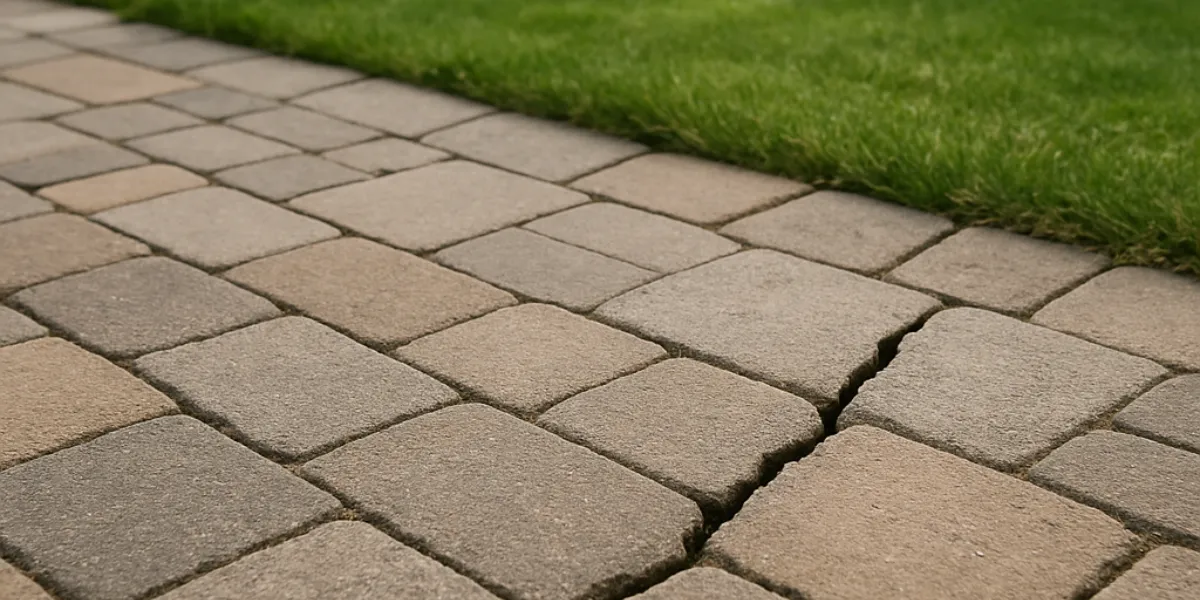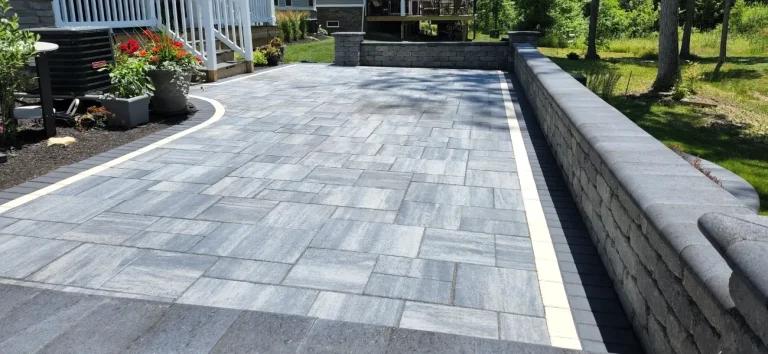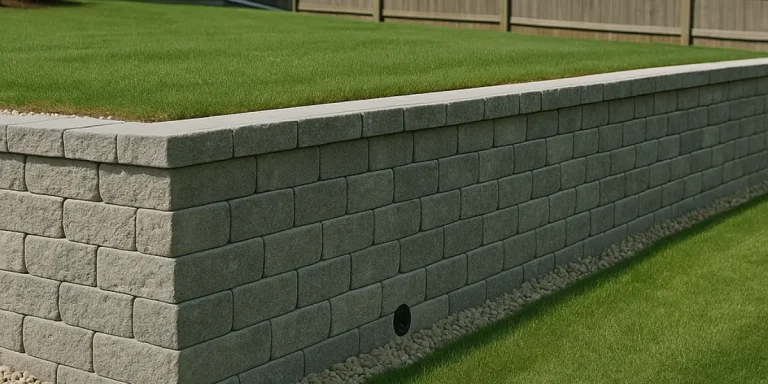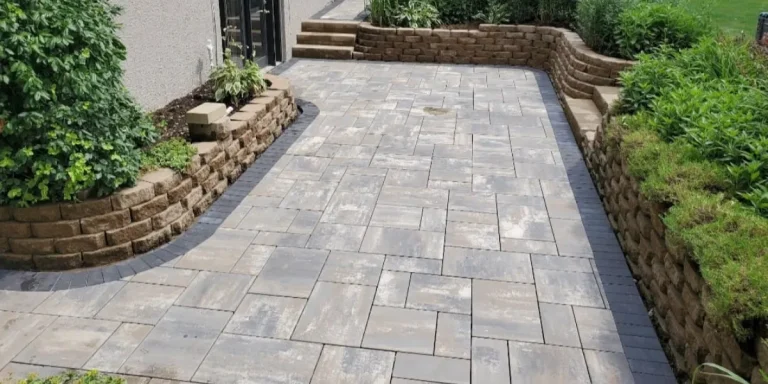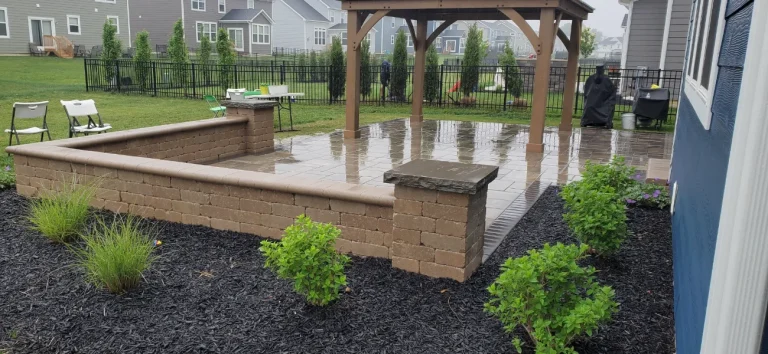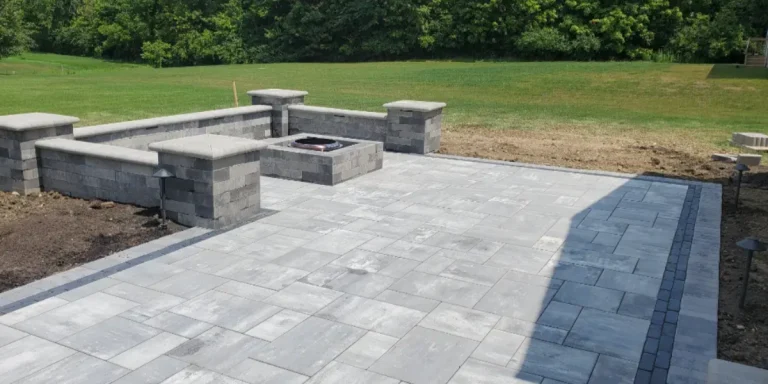What to Do When Pavers Shift or Crack
Paver patios, walkways, and driveways are popular for their durability and classic look—but even the best paver installations can develop issues over time. If your pavers are shifting, cracking, or becoming uneven, it’s a sign that something below the surface needs attention.
At Double A Ohio, we specialize in diagnosing and repairing paver problems for homeowners in Marengo and surrounding Central Ohio communities. Here’s what you need to know about identifying the problem and how we can help restore your outdoor space.
Why Do Pavers Shift or Crack?
Pavers are built to last and are designed to move slightly with the ground—but that flexibility can only go so far. When underlying conditions aren’t ideal or when an installation wasn't done properly, pavers can shift, sink, crack, or become uneven over time. Understanding the root causes can help you take preventative action or know when it’s time to call the professionals at Double A Ohio.
Improper Base Preparation
A strong, well-compacted base is essential to any long-lasting paver project. When the base is too shallow, poorly compacted, or composed of the wrong materials, it compromises the entire structure. This is one of the most common reasons we see pavers fail in Central Ohio.
-
- Inadequate depth of base gravel: A shallow base doesn’t support the pavers under pressure, leading to dips and heaving.
- Poor compaction during installation: If the base layers weren’t compacted with the proper equipment, voids and soft spots form beneath the surface.
- Use of dirt instead of aggregate materials: Dirt shifts with moisture and temperature changes, whereas crushed stone or gravel locks into place and resists movement.
At Double A Ohio, we use industry-best practices and premium base materials to ensure your paver patios, walkways, and driveways are built on solid ground from the start.
Water Damage and Drainage Problems
Without a proper drainage system, water can become your worst enemy. Excess moisture washes away the base material, weakens the structure, and accelerates movement. This is especially problematic in Central Ohio, where freeze-thaw cycles are frequent.
-
- Clogged downspouts or pooling near the edge of the paver area: If gutters and downspouts release water too close to your pavers, they can erode the base or create freeze pockets in winter.
- Freeze-thaw cycles that disrupt the sub-base: Moisture that freezes beneath the pavers can lift them, and when it melts, they settle unevenly.
- Lack of edge restraints to contain lateral movement: Without proper edging, pavers can slowly drift out of position, especially during periods of high rainfall or thawing.
Our team at Double A Ohio frequently adds or upgrades grading and drainage systems like French drains, swales, and permeable paver options to extend the lifespan of your outdoor surfaces.
Tree Roots and Soil Movement
Mother Nature also plays a role in paver displacement. Shifting soils and growing tree roots are natural but predictable forces that need to be accounted for in any paver design.
-
- Buckling caused by root growth under the patio: Tree roots, especially from species like maple or oak, can push upward on pavers over time.
- Soil expansion during wet seasons and contraction during dry ones: Central Ohio's clay-heavy soil is notorious for expanding and shrinking depending on moisture levels, leading to movement under your paver areas.
At Double A Ohio, we assess nearby tree placement and soil type before installing any hardscaping elements to help prevent long-term shifting or cracking.
Age and Wear
Even the best paver jobs need occasional maintenance. Over time, the elements, foot traffic, and weight from vehicles or patio furniture can take a toll.
-
- Cracks from vehicle weight or dropped objects: Pavers can chip or crack under excessive point loads or sharp impact.
- Erosion of polymeric sand in the joints: Without regular maintenance, joint sand can wash away, making it easier for weeds to grow and for pavers to loosen.
- Fading or spalling from prolonged UV and moisture exposure: Surface deterioration reduces the aesthetic appeal and can signal deeper structural issues.
If your pavers are showing signs of aging or uneven wear, Double A Ohio can assess whether it’s time for repairs, re-leveling, or a full refresh of your outdoor living space.
What You Should Do About It
If your pavers are shifting or cracking, it’s important to take action sooner rather than later. While it might seem like a small visual flaw or an uneven patch, these issues can become tripping hazards, lead to water damage, or even require full replacements if left untreated. The good news? Many of these problems can be resolved affordably when caught early—especially with help from the professionals at Double A Ohio.
1. Inspect the Area
Before calling in the pros, do a quick visual assessment of the space. This will help you identify where the damage is and how widespread it may be.
Look for:
-
-
- Uneven surfaces or areas where pavers feel unstable underfoot
- Sinking or heaving spots that disrupt the flow of your walkway or patio
- Cracked or broken pavers due to impact or structural stress
- Gaps between pavers indicating lateral movement
- Pooling water after rain, which could signal a drainage or grading problem
-
If possible, take pictures or make a note of which areas are affected. This helps the Double A Ohio team quickly understand what’s happening during your on-site consultation.
2. Avoid DIY Fixes for Structural Issues
It’s tempting to try lifting and re-leveling a few pavers on your own, especially when the damage seems minor. But without the right tools or knowledge of what’s happening beneath the surface, these quick fixes rarely last.
Why DIY patch jobs often fail:
-
-
- They don’t address drainage issues that are undermining the base
- Compaction tools (like plate tampers) are often needed for lasting results
- Reinstalled pavers may settle again quickly if the base isn’t rebuilt properly
- Incorrect joint sand use can lead to weed growth, movement, or water infiltration
-
Unless the problem is purely cosmetic, we recommend contacting a trusted hardscape professional like Double A Ohio to assess the true cause and recommend the best course of action.
3. Call Double A Ohio for a Professional Evaluation
The sooner you bring in the experts, the better your chances of avoiding major repairs. At Double A Ohio, we don’t just repair the surface—we dig deeper (literally) to identify why the issue is happening and how to prevent it from returning.
When you contact us, we’ll:
-
-
- Perform a full inspection of your paver installation, grading, and soil
- Determine whether the issue is isolated or systemic
- Check for signs of poor base preparation, drainage failure, or tree root interference
- Recommend targeted repairs or full paver patio reconstruction if needed
- Discuss potential improvements, such as adding retaining walls, edge restraints, or integrated drainage solutions to stabilize the area long-term
-
Whether you need a few pavers reset, a new base layer, or an upgraded layout that handles water and traffic better, Double A Ohio has the experience, tools, and craftsmanship to get the job done right the first time.
How Double A Ohio Repairs Damaged Pavers
At Double A Ohio, we don’t just do patch jobs—we provide lasting, professional paver repairs that restore both the appearance and functionality of your outdoor spaces. Our process ensures the damage won’t return with the next heavy rain or freeze-thaw cycle.
1. Site Evaluation and Drainage Check
We start with a detailed assessment of your existing installation, checking for:
-
-
- Improper slope or grading
- Failing base conditions
- Surrounding features like retaining walls, landscape beds, or downspouts
-
If we discover any water-related concerns, we incorporate drainage solutions or grading fixes to prevent future damage.
2. Removal and Re-Compaction
We carefully remove the damaged pavers and inspect the base underneath. If it’s insufficient, we:
-
-
- Excavate to the proper depth
- Install a new, compacted gravel or crushed stone base
- Add new edge restraints if they’re missing or damaged
-
This solid foundation prevents future shifting and ensures long-term stability.
3. Reinstallation with Joint Stabilization
Once the base is corrected, we reinstall the pavers so they sit evenly and securely. Then we:
-
-
- Apply polymeric sand between joints to lock the pavers in place
- Prevent weed growth and insect intrusion
- Create a clean, finished look
-
4. Optional Upgrades
If your paver area is outdated or you’d like to improve its functionality or visual appeal, we can:
-
-
- Extend your paver patio or walkway
- Upgrade to new paver styles, borders, or inlays
- Add new features like a firepit area, landscape lighting, or integrated retaining walls
-
Double A Ohio delivers high-quality results that make your space both beautiful and built to last.
Real-Life Example: Fixing a Shifting Walkway in Sunbury
One recent client in Sunbury contacted us after their front paver walkway began to sink and become uneven—creating a trip hazard. We discovered poor compaction and no edge restraints. Our team removed the pavers, rebuilt the base, added a proper border, and reset the walkway to match the front steps. The result was a safe, level, and attractive entrance that added curb appeal and safety.
Proudly Serving Central Ohio
Double A Ohio offers expert paver repair, hardscaping, and landscape design services throughout the Central Ohio region, including:
-
- Marengo
- Sunbury
- Galena
- Johnstown
- Mount Gilead
- Delaware
- Other towns in Knox, Delaware, and Morrow Counties
Call Today to Restore Your Pavers the Right Way
Don’t wait until that minor trip hazard becomes a major problem. Contact Double A Ohio for a professional paver inspection and repair estimate. Our experienced team is here to help you fix shifting pavers, improve drainage, and enhance the overall look and safety of your landscape.
We proudly serve homeowners in Marengo, Sunbury, and surrounding Central Ohio areas with trusted service and lasting results.

